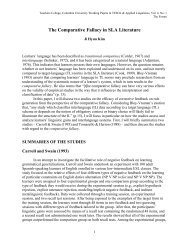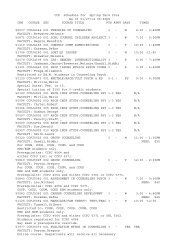UNICEF Mongolia - Teachers College Columbia University
UNICEF Mongolia - Teachers College Columbia University
UNICEF Mongolia - Teachers College Columbia University
You also want an ePaper? Increase the reach of your titles
YUMPU automatically turns print PDFs into web optimized ePapers that Google loves.
CHAPTER 4: THE IMPLEMENTATION OF THE 2007 SALARY REFORM AT SCHOOL LEVEL<br />
1<br />
2<br />
3<br />
4<br />
5<br />
6<br />
We would argue that the structure of the teacher salary has not changed post-reform, despite a major<br />
increase in the nominal value of the various components that make up the total pay. In other words,<br />
today’s salary structure is as fragmented as it was before 2007 with the following excepon: the number<br />
of salary supplements for funcon has been reduced to three funcons only—that is, class teacher,<br />
cabinet, head of secon. All other components already existed prior to the reform. As will be shown later<br />
in this report, performance bonuses have a much greater weight as a percentage of the total pay than<br />
before.<br />
The eliminaon of funconal supplements—in parcular notebook checking—seen as an integral part of<br />
the teaching profession in other educaonal systems has elicited protests among some group of teachers.<br />
The qualitave data from this study reveal that primary teachers especially complain about the lack of<br />
this addional supplement. A few educaon managers who had been working for many years in the<br />
system observed that teachers tended to grade less and provide less feedback to students than before.<br />
In general, there were many complaints about the eliminaon of the notebook-checking supplement<br />
by both educaon managers and primary teachers. However, these complaints need to be put into<br />
perspecve: the eliminaon of the notebook grading supplement should be viewed from an educaonal<br />
rather than a financial perspecve as a fundamental change that alters the role of the teacher as well as<br />
that of the educaon manager. Seen posively, the eliminaon of this parcular funconal supplement<br />
Figure 14: Composion of the Teacher Salary, 2011<br />
TEACHERS IN MONGOLIA: AN EMPIRICAL STUDY ON RECRUITMENT INTO TEACHING,<br />
PROFESSIONAL DEVELOPMENT, AND RETENTION OF TEACHERS<br />
Total Pay<br />
Base Salary<br />
Additional<br />
Teaching Hours<br />
Supplements for<br />
Functions<br />
Supplements for<br />
Rank<br />
Bonuses for<br />
Performance<br />
General Benefits for<br />
all Public Servants<br />
Class Teacher<br />
Cabinet<br />
Head of Section<br />
Quarterly<br />
Performance Bonus<br />
Outcomes-Based<br />
Bonus<br />
Bonus for<br />
Olympiads<br />
64





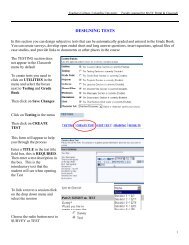

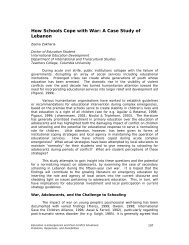

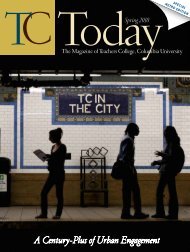




![TC Tod[...].pdf - Teachers College Columbia University](https://img.yumpu.com/27074883/1/190x252/tc-todpdf-teachers-college-columbia-university.jpg?quality=85)

